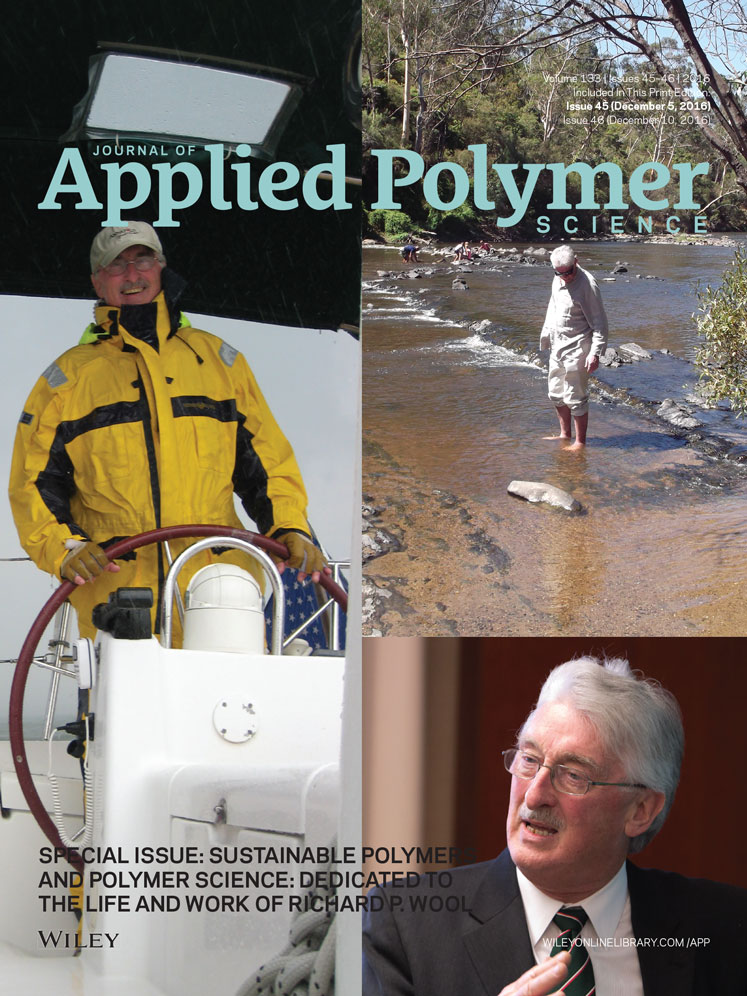Effect of temperature and concentration of acetylated-lignin solutions on dry-spinning of carbon fiber precursors
ABSTRACT
Carbon fibers derived from biomass such as lignin have received increasing attention due to the sustainability of the precursor. In this study, partially acetylated softwood Kraft lignin (Ace-SKL) was investigated for the purpose of dry-spinning into carbon fiber precursors. The viscosity of solutions prepared from different concentrations of acetylated-lignin and acetone were investigated at high shear rates encountered during fiber spinning. Ace-SKL solutions displayed a significant shear-thinning behavior at all temperatures studied with power-law exponents ranging from 0.33 to 0.82, confirming the macromolecular nature of the Ace-SKL lignin/acetone solutions. As expected, elevated temperatures led to lower viscosities and facilitated extrusion at moderate pressures. Dry-spinning was performed over a range of concentrations and temperatures. Fibers obtained from room temperature dry-spinning displayed a relatively smooth surface but the pressure drop was excessive. Lignin fibers from elevated temperatures spinning displayed more crenulated surface pattern, and more crenulations achieved for fibers spun at higher temperatures. Presence of some doubly-convex and sharp crevices was found on fibers produced from solutions containing lower concentrations (1.85 and 2.00 g lignin/mL solvent). In contrast, no crevices were found on the fibers obtained from the concentrated solution (2.15 g/mL), likely due to the reduced extent of solvent out-diffusion. It was observed that the sharp crevices found in the lignin fibers spun at lower concentrations led to carbon fibers with occlusion type defects, thence reduced strength. In summary, this study elucidates the importance of precursor composition and processing conditions on microstructure and properties of resulting precursor and carbon fibers. © 2016 Wiley Periodicals, Inc. J. Appl. Polym. Sci. 2016, 133, 43663.




